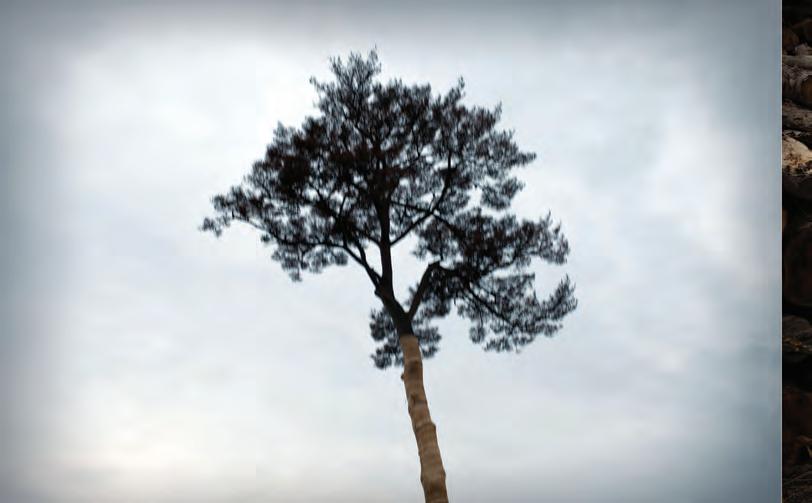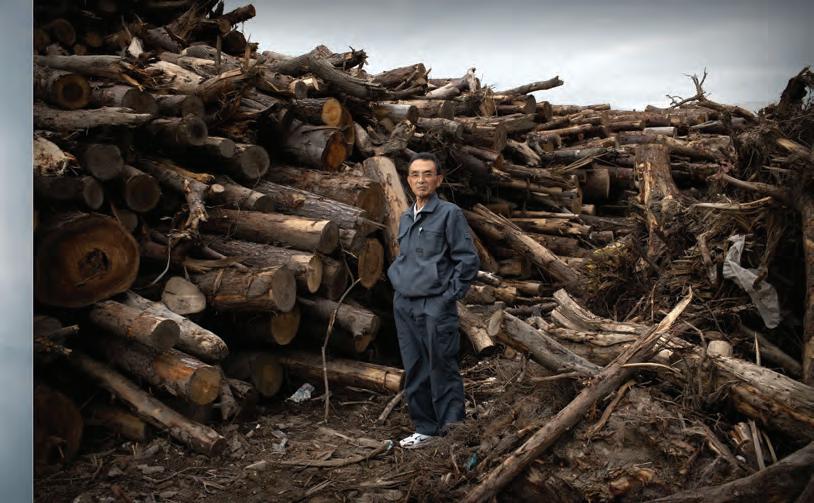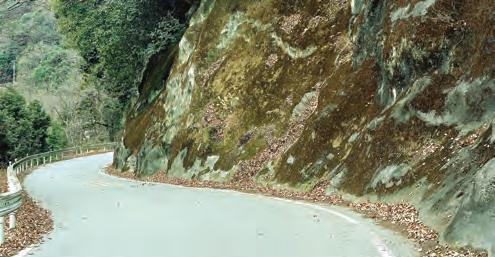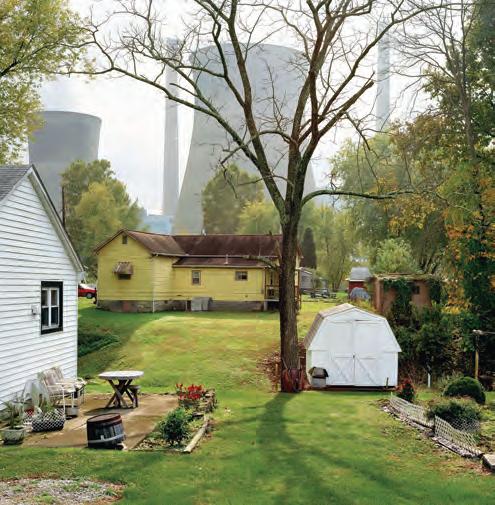
9 minute read
Environment
from TWSM#7
Workplace Environment
The Wheel of Life
Advertisement
As Leonardo da Vinci found, after years of studies and quest for perfection, in 1497 he came to the conclusion that the wheel, represented by his world famous “vitruvian man” was the perfect design.
By FABRICE LECLERC
A PERFECT TOOL
One of the most powerful designs in life is the wheel. The first cell, which appeared on the planet billions of years ago, was a circle, a simple bubble that floated on a primitive sea. It was able to concentrate on life substances like the sun’s energy while being in perfect harmony with its environment.
STAYING IN THE MIDDLE
The expression “to think outside of the box” is just a way for people today to get out of the wrong design. Staying in the middle means giving the same value to all the “quadrants” that constitute the wheel of life. It is also the center of the wheel where the maximum energy is achieving personal terms where happiness lies.
QUADRANTS OF THE WHEEL
They are made of all that matters to us, love, relationships, material accomplishment, food, sex, family, health, dreams, sense, purity of the water, the soil and the air, bio diversity and life which are the direct result of a good balance... if one of these “quadrants” is blocked the whole wheel of life can stop, leading to a crisis on all the other quadrants.
NOW WE ARE IN THE MIDDLE
In the past, the Mesopotamian civilization was convinced that the earth was flat and it took centuries to see “heretics” challenging the concept. Eventually Magellan and Juan Sebastian Elcano’s vision on circumnavigation proved to be the right approach. It took centuries, fierce battles and many deaths to get there. Speed of reaction and adaptation does not mean rush, “Rome was not created in one day”. Energies of change need to be clearly
01
Five steps from Patagonia.
Apply to individuals as well as companies who want to reduce the harm they do and make a difference.
The wheel was used as a potent healer by the same civilization that created Stonehenge. The Mayans created a calendar wheel that can still predict events that will happen in years to come. The most powerful Egyptian pharaohs used sun wheels to govern their people. Native Americans used “medicine wheels” made of simple stone alignments on the floor to stay in contact with Nature’s healing powers.
1Lead an examined life. Most of
the environmental damage humans
cause is a result of ignorance. That ignorance is willful when we avoid confronting our problems, when we refuse to learn because we don’t want to have to act on what we know.
2Clean up your act. Once you
learn the environmental costs, try
to reduce them. And when you can reduce them, you must. Once we found out how harmful cotton was, we sought a sensible alternative. And we
Back to the wheel
We, human beings, in order to avoid losing money (or earn more), often expect problems to resolve themselves. The Kyoto Protocol, which was meant to help clean up the world and was welcomed initially by everyone with positive feedback ended up with no one really caring (beginning with the US), is an example of human beings doing nothing. Today we have two options. The first is to wait for tragic natural events or speculators (see Amazon Rainforest) to destroy the plants leaving us with a stack of timber to dipose. The second is to address the issues that are on the table. In other words, act! According to Fabrice Leclerc, the author of this article, acting means putting the event in a circle to ensure that one is leading to another, in order to return to a natural order of life.

found one. Organic cotton. People love to figure out how to do the right thing, once they know what that is.
3Do your penance. No matter
how diligent a corporation, it causes
waste and pollution. Our initial fabric assessment told us that antimony, a dangerous heavy metal, is used in the making of polyester resin. Our penance takes the form of a voluntary “earth tax.” For many years we donated a percentage of our profits to grassroots environmental organizations working to save and restore habitat.
4Support civil democracy.
Today in the United States, small groups of kayakers and fishermen work tirelessly to bring down dams; duck hunters toil to preserve
wetlands. These are the people who do the most to hold the corporations at bay and keep the government honest. These are the kind of groups to whom we give most of our money.
5Influence other companies. Share the knowledge. The company that discovers new ways to be more environmentally responsible has an obligation to spread the word to others – to share the knowledge of what can be done. Again, people like to do the right thing when they know the right thing to do. accepted and combined into a grid. Civilizations take a leap ahead when this happens and this is the case right now with the energies of change. We’re facing an unprecedented challenge right now. We have three crises that are feeding off of each other – the global economic meltdown, the energy crisis and real time climate change. When you put those together, it’s clear that we’re at the end of an age, and the question then is what do we do?
LOOKING FOR A NEW VISION
What’s missing so far is a new economic vision that would be powerful enough to address the enormity of this moment in history. We began to develop the beginnings of a game plan. • Do we know that Aspartame, the ingredient contained in most industrial sweetners like Coca Cola, can provoke cancer causing a blockage in the wheel of life? • Do we know that salmon bought in supermarkets contains heavy metals and super high levels of contaminants? • Do we know that the water we drink from the tap is drinkable only because the state does not analyze the content of medicines and millions of new contaminants which did not exist when regulations were made? • Do we know that living in a polluted city has a severe impact on longevity? Can eating non organic, or worse genetically modified food, create a hazard to one’s health? Do we know that using cellular phones is the number one cause of brain cancer and death? • Do we know that smoking kills?
AUTHENTIC INFORMATION IS KEY
The problem is that most of this authentic information has been hidden to only benefit one quadrant of the wheel: the profit quadrant. No doubt the wheel has been blocked by the serious trouble the markets and economies are in. So what environmentally friendly activities can be done to speed up the process of healing. This is the healing recipe of Yvon Chouinard, the legend of the good business evolution and founder of the Patagonia sportswear company. “It took me nearly 25 years in business to learn how to ask that question. It has taken another 15 years of trial and error to uncover the process that Patagonia has to go through in pursuit of answers.” The issue we are facing today comes from the fact that our lifestyle and our business models are based on lines. This consumption without bearing the
real environmental or social costs is not sustainable and is, in other words, toxic.
WE NEED MORE FROM BUSINESS THAN JUST PROFIT
Ben Verwaayen, CEO Alcatel-Lucent When faced with a chronic disease, much like the economy or in us, it is advised that you eat better, through organic, fresh and local foods, take the time to detox and exercise in order to reconnect with Nature. In other words, give room for the spiritual life. Stop and think. Get back to the wheel of life and get back to your center. As soon as that happens, you can feel the system healing. This, of course, works for any lifestyle, any business, for, well, anything.
It takes a matter of seconds to make the change and take the courage to face social and cultural boundaries that tend to slow us down.
02

FUTURE CAPABILITIES WILL BE
VERY DIFFERENT, AND WILL
PUT A PREMIUM ON LATERAL THINKING AND CROSSFUNCTIONAL, COLLABORATIVE PROBLEM SOLVING
Jeffrey Swartz, CEO Timberland Courage, fun, creativity, vision, love and dreams are the highest energies of the wheel. They are reshaping, for what may be the last time, our civilization.
WE HAVE LOST TRUST AND WE NEED TO REGAIN IT WITH A CULTURE OF RESPONSIBLE BEHAVIOR
Kaspar Villiger, Former chairman UBS The wisdom of the wheel and its power lays in the observation that big leaps are done thanks to a multiplication of small leaps. The integrity of the human body is the integrity of all its cells. If one cell goes bad and quits the wheel of life, it can cause the whole system to die. Everyday small changes, multiplied by billions of individuals will considerably speed up the transformation of our linear lives and business to the circular ones. As the Chinese say, a bucket of water can not break a stone, but a drop of water every day can destroy a mountain. Building trust in the process is crucial.
CONSUMERS ARE ASKING WHO IS BEHIND THE BRAND, SO WE HAVE TO MAKE IT VISIBLE
Paul Bulcke, CEO Nestlé It is not a matter of central powers but distributed powers. In other words, any one of us has the power to change the world. New York became a safer city thanks to focus on the correction of small disorders. Facebook reached billions of dollars in brand value due to connecting millions of single personal projects. In addition, Muhammad Yunnus created one of the most powerful banks, the Grameen Bank, by connecting millions of micro credits. The speed of our evolution is marked by the trillions of small and simple changes that one person has the power to accomplish and could be doing now. Change comes with awareness and information, but most of all, with good sense and authenticity. These must happen everywhere beginning with our lifestyles, businesses and brands.
If you know the rule of Nature, like the wheel, you don’t need information or experience to thrive and speed up the healing of the world. •

02 © Shunsuke Ohno, Courtesy Russiantearoom, Paris, rtrgallery.com. For his first personal exhibition at the RTR gallery, Shunsuke Ohno presented his Landamscapes series from 2009. His pieces always have two meanings. On the surface they are singular landscapes, but in a deeper look, there is a perception of beauty strongly inspired by Buddhist culture. Ohno shows that landscapes are infinitely pure with obvious beauty. He makes us feel their essence. 03 Amos. Photo: © Black River Productions, Ltd. / Mitch Epstein, Courtesy Galerie Thomas Zander, Cologne .
These pictures question the human conquest of nature at any cost. There are different ways to
consider energy production: one, positive, essential to progress, to society’s well-being; the other, more complex, can be considered as the origin of irresponsible capitalism, which leads to catastrophes such as Chernobyl in Russia or more recently, Fukushima in Japan. Mitch Epstein, an American photographer born in 1952, did his first assignment for the New York Times. Fascinated, he decided to start the American Power project, becoming a kind of “tourist of energy” in the United States. This is more about understanding than judging; it’s not a straight on criticism, it’s more about highlighting elements to reflect upon, supported by the power of images.










